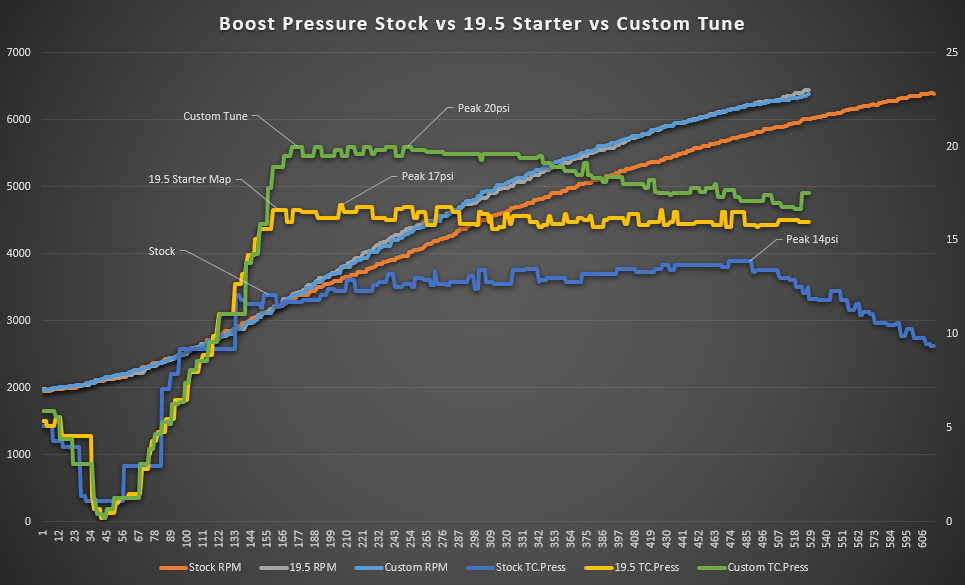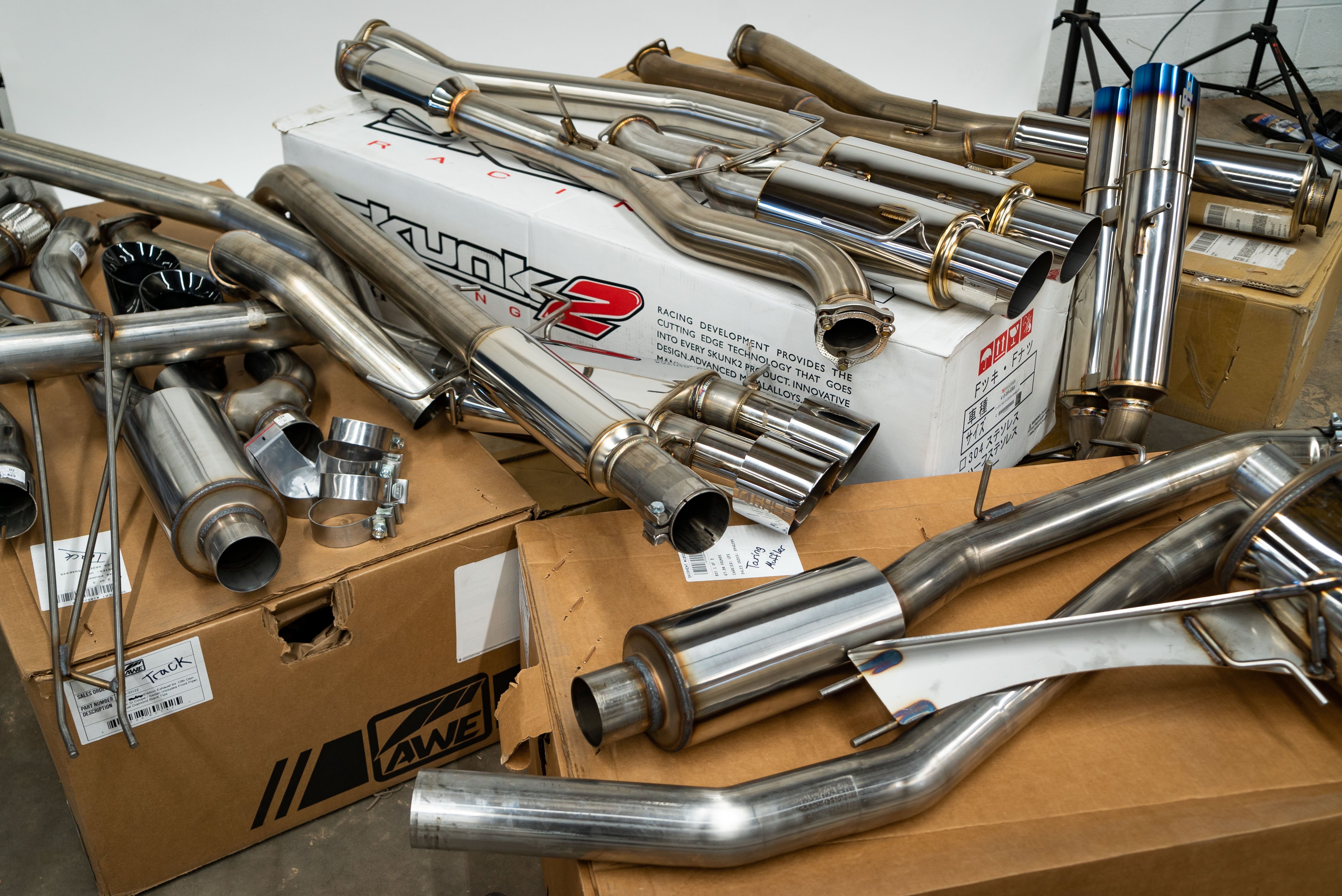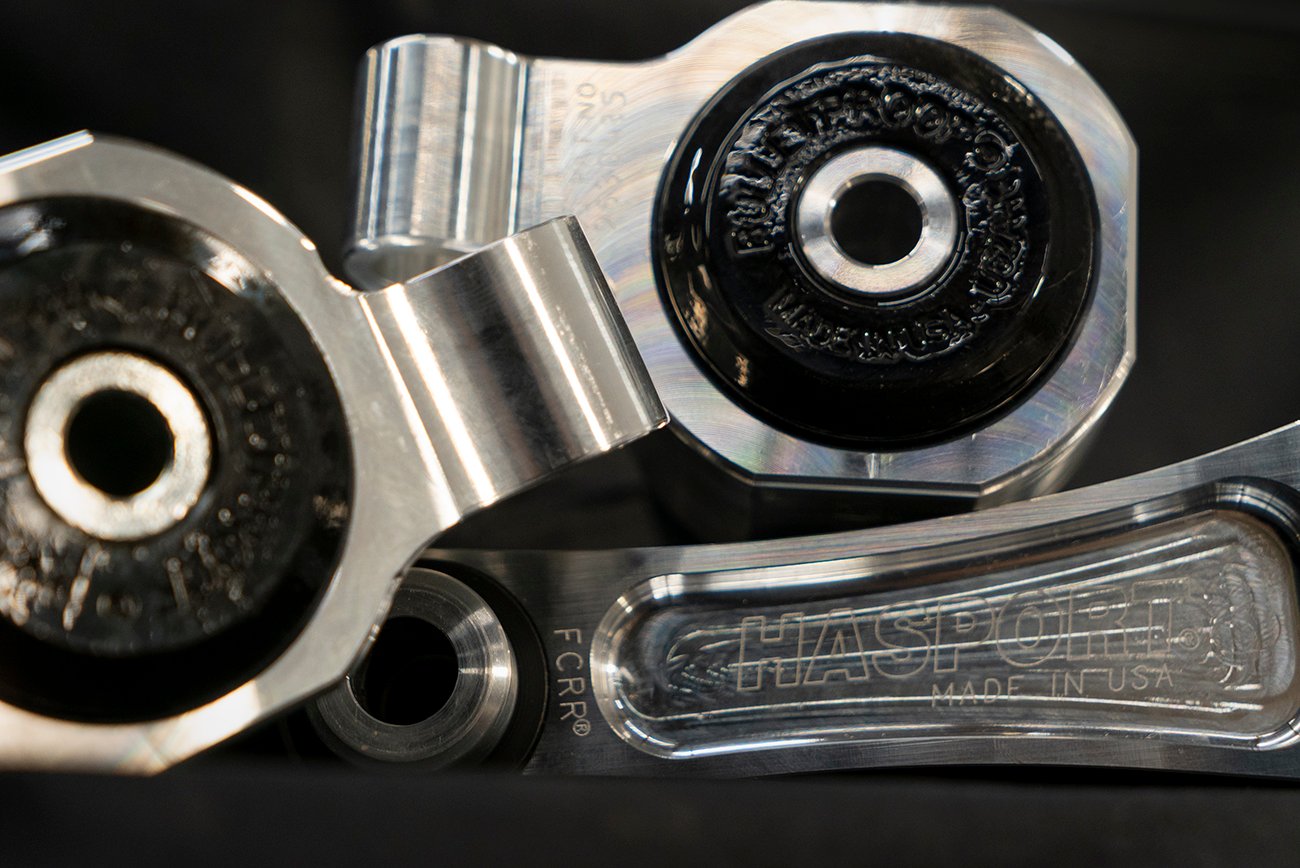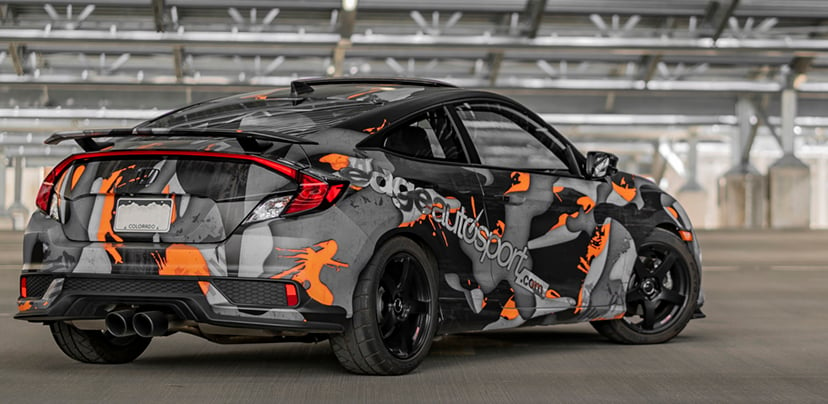.jpg?width=1000&height=332&name=Tuning%20Project%20FC3%20-%20No%20Parts%2c%20HUGE%20Gains%20(1).jpg)
Before we got started on installing any hard parts with Project FC3, our 10th Gen Honda Civic Si coupe, we wanted to see what this thing was capable of right out of the box with just some good ol’ fashioned fuel injection manipulation aka ECU tuning. By way of our KTuner device and custom tuning software which applies changes directly to the factory ECU, we were able to mess with the turbo boost pressure, ignition timing, and fueling to create more power and torque, all with just a computer and a dyno.
.jpg?width=1920&name=Tuning%20Project%20FC3%20-%20No%20Parts%2c%20HUGE%20Gains%20(3).jpg)
I sat down with our tuner Alan, and asked him a few questions about tuning the car. Here’s what he said. Dyno graphs and data about power and torque is below!
Question: What do you see being the biggest challenge in tuning our Project FC3?
Answer: Tuning any new platform can be a bit of a challenge. There isn’t as much information to go off of when learning the software and the strategies the ECU uses to control air, fuel, and spark. Because of this, there are always some relatively big hurdles to get past when you first start with a new car. But as you continue to put the time in, the patterns start to become clear and you start to develop a sense of what the car likes and how to control it properly.
Question: How responsive is the stock turbo after making changes? Where did the stock turbo boost start with the stock map, compared to where you ended up? Is there a lot left in it compared to stock or only a little?
Answer: The stock turbo on the Si definitely has a lot of room left in it from the factory. On the stock calibration I usually see around 14psi. On the Ktuner/Hondata OTS Maps, the most I’ve seen is 17psi. This is a limit of our high altitude as I know they run higher boost closer to sea level. On our stock setup, I’m running about 19.5psi. This is the point of diminishing returns with the factory components and pushing more boost doesn’t necessarily correlate to more power, at least not until some other components are upgraded.
Question: What’s the biggest limitation with tuning the car in completely stock form?
Answer: I’m not sure if it is the biggest limitation, but the first limitation I’m coming up against is flow, both into and out of the engine. The factory exhaust seems a bit restrictive, and I’m sure opening up the intake will help as well. An engine is an air pump, so the more air you can get through it, the more power you can make. I’m sure an upgraded intercooler is going to be a pretty big boost in power capability as heat management does become a big restriction when running higher boost levels.
Question: Where did Honda leave the most amount of room for improvement?
Answer: I think Honda setup the car to make the most power they could reliably and consistently on the factory components, which are designed for various specific reasons. Increasing power on the factory setup effects both reliability and consistency. The further away from the base you get the less reliable and consistent the car will be in factory form. As a tuner, I strive to find the balance and not push too far. Once some of the factory limiting components are replaced with higher flowing/more efficient options, the reliability and consistency slide back towards the center.
.jpg?width=1920&name=Tuning%20Project%20FC3%20-%20No%20Parts%2c%20HUGE%20Gains%20(2).jpg)
Question: Does the small 1.5 liter displacement seem to be an issue with making more power or spooling the turbo?
Answer: Making power, no… spooling the turbo, yes! The factory turbo spools plenty fast and has decent top end. In fact, I’m fairly impressed with the balance that Honda struck with that turbo on the 1.5L engine. As we see with the Fiesta and Focus ST’s, the small stock turbos spool instantly but can’t sustain power on the top end to save their life, which ultimately makes them fail prematurely. The Civic’s turbo is quite balanced with decently quick spool, but it is also a good top end performer. I think the 1.5L engine combined with that turbo is a winning combination for most people. It certainly doesn’t feel like a 1.5L engine when you drive it, especially once you have tuned it up some! When you start going to bigger turbos, you will find the limits of what the engine can do. Perhaps not in terms of max capable power, but definitely in its ability to produce a larger power band. And until we can get the engine to rev to 8000 or 9000rpm, big power turbos will have a very small window of big power.
Question: What’s the maximum amount of power you think the stock turbo is capable of, after parts are installed on the car?
Answer: Its hard to say for sure as I have not had a fully modded car on the dyno yet as of this answer, but from what I’ve seen, the stock turbo seems to be capable of touching the 300hp mark. I don’t know that it will be possible to do that at our altitude, but I’ve seen a few other shops hit that mark with a combination of parts and ethanol tuning.
Question: What do you think the best single mod would be after tuning, now that you’ve seen what the car is doing without any parts?
Answer: I’m stuck between the downpipe and the intercooler. I think both are going to go hand in hand. The temps from running a few more psi over stock are starting to get pretty high and the stock intercooler heat soaks fairly quick. But the turbo seems to hit a flow restriction as well. If I had to pick one though, I think I’d go downpipe. You are going to need to keep boost lower with the stock intercooler, but the downpipe will allow you to make more power without pushing more boost. Once you upgrade the intercooler, turn up the boost for even more gains.
Question: How much peak boost are you hitting and how much does it taper off at the top?
Answer: On our car, which as of this answer is still stock, I am targeting 19.5psi and it tapers down to about 16psi up top. Increasing boost on the stock car just created more heat with more interference from the knock control system, and no power gains.

Question: What AFR range did you settle into once tuning was complete?
Answer: I played around with a couple different options, but the car seems to be happier with a richer AFR than what I typically see out of direct injected cars. For now I have it sitting in the high 10’s to low 11’s. On the E30 tune, I ran it a bit leaner into the mid 11’s.
Question: Did you have trouble controlling knock at all or was it pretty straightforward being able to get to a comfortable limit where the cylinder isn’t seeing any knock?
Answer: The Civic has a different knock control strategy than anything else I work with. It actually makes adjusting timing kind of difficult. Even when knock control is active, it doesn’t necessarily mean the car is knocking.
Question: Do you think the car responds well enough to pump gas to be satisfied if you don’t want to try any ethanol tuning?
Answer: It responds really well on pump gas, though I am never satisfied, and will always want to get the most out of it. A pump gas only tune is certainly worth it though and will gain a ton of torque over the stock calibration.
All in all, the progress made on the car was significant. Here is the dyno graph of 3 different scenarios - the bone stock power and torque curve, after the KTuner 19.5 psi map, and finally, our own custom tuning. The peak power tells a very small part of the story. The peak torque gains are massive and the power lifted a ton all over the middle of the curve! I've also included some easily displayed data that shows the difference in power and torque at the peak and at 4500rpm on our 10th Gen Civic Si. We couldn't be happier with this starting point.
| PUMP GAS ONLY | Peak HP/TQ | % Gain | HP Gain @ 4500rpm |
| Stock | 191.0hp / 203.2tq | ||
| KTuner 19.5psi | 201.6hp / 235.7tq | +6% HP +16% TQ |
+21.6 / +13% HP +25.3 / +13% TQ |
| Edge Autosport Tuning | 207.3hp / 255.7tq | +9% HP +26% TQ |
+37 / +22% HP +43.3 / +22% TQ |

91 octane pump gas used
Interested in more? We installed an aFe Power Exhaust System after we this tuning phase and then we put in on the dyno. The results speak for themselves. Find out about it right here.
I'm the founder of Edge Autosport and I remember first getting into cars in high school. I read all the magazines, bought a bunch of technical books, and finally got to start wrenching around the age of 19. I really enjoy modding and being able to live out a passion is truly awesome. I wouldn't change a thing.


